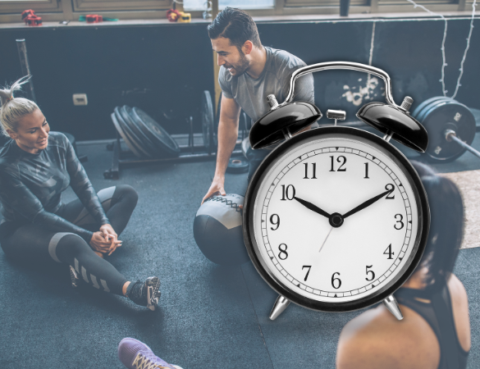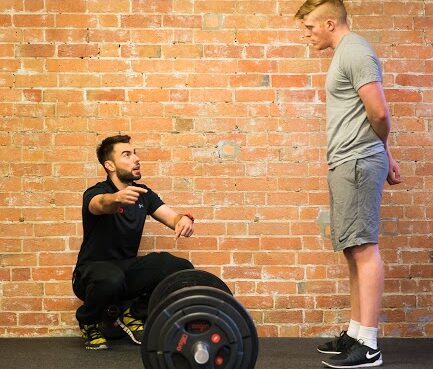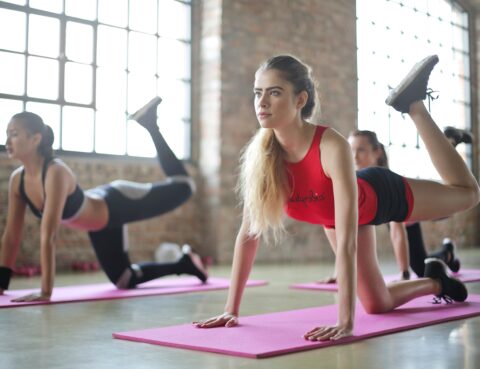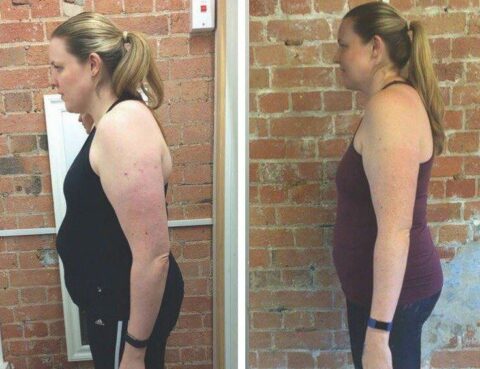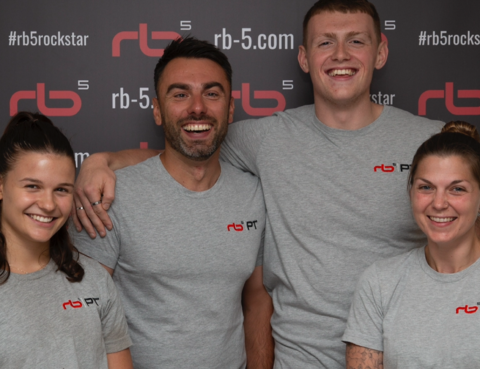Urgency is everywhere; emails must be answered now, results must be instant, and fitness promises are sold in “30-day transformations.” But when it comes to your health and body, urgency can be the very thing that derails your progress. At our personal training studio, we believe fitness isn’t a hobby or a seasonal sprint—it’s a way of life. That’s why we help our clients shift their mindset from quick fixes to long-term sustainability.
The Trap of Urgency in Fitness
You’ve likely seen the ads: “Drop 10 pounds in 10 days,” “Get shredded for summer,” or “Lose belly fat fast.” These types of messages prey on a sense of urgency that can create unhealthy expectations. While they might deliver short-term results, they rarely lead to lasting change. In fact, they often lead to burnout, injury, and frustration. The urgency trap makes you feel like you’re behind, like you’re racing a clock. But fitness isn’t a race; it’s a relationship with your body. And just like any meaningful relationship, it takes time, patience, and consistency.
Why a Routine Mentality Wins
The goal isn’t to be perfect for a week, it’s to be consistent for a lifetime. We encourage our clients to view fitness as a part of their identity, not a phase. That means focusing on:
- Progress over perfection: A missed workout isn’t failure; it’s part of the process.
- Habits over hype: Regular movement, balanced nutrition, and recovery are more powerful than any short-term plan.
- Function over aesthetics: Strength, energy, mobility, and confidence are the true signs of health—not just what you see in the mirror.
When fitness becomes a routine (not something you do only when you “feel motivated”) it stops being a burden and starts becoming a part of who you are.
Crafting a Fitness Mentality
Building a long-term fitness mentality means embracing the idea that small, consistent efforts lead to lasting change. Here’s how we help our clients do that:
Set process-based goals
Instead of focusing solely on the scale or measurements, we set goals around behaviors: “I will train 3 times this week,” or “I will get 7 hours of sleep each night.”
Celebrate consistency
Showing up matters more than going hard. We highlight and reward consistency—because the client who trains steadily for 6 months will always outperform the one who goes all-in for 3 weeks and quits.
Educate for empowerment
We don’t just coach workouts, we teach lifestyle. Clients learn how to adjust their routines for life’s ups and downs, whether it’s a busy season at work, travel, or family commitments.
Build in flexibility
A good routine doesn’t mean rigidity. We help clients understand how to adapt, when to push and when to pull back so fitness fits life, not the other way around.
There is no deadline for becoming the strongest, healthiest version of yourself. That’s why we don’t do “summer body” programs or crash challenges. Instead, we partner with you to build a mindset that supports lifelong fitness. From the second you start your fitness journey with us, we work to ensure that each plan is personally tailored to you and your needs. Sign up today and experience how we do things differently; helping to ensure that personal training stays personal.
Avoid the urgency traps. Slow down. Be consistent. Trust the process.
The problem with being a personal trainer? Everyone feels the need to justify their food choices the moment
they see me—especially at the pub.
The other night, I bumped into an old friend I hadn’t seen in years. Before I could even say, “Hey, how’s life?”
he was already in full confession mode.
“Ricky, listen… I don’t normally eat like this.” (As he dipped a triple-fried chip into a bowl of garlic mayo.)
“I’ve been really good all week.” (While eyeing up the sticky toffee pudding.)
“It’s all about balance, right?” (Holding a pint so big it needed two hands.)
And look—I get it. We all love a treat now and then. The problem isn’t one pint, one burger, or one dessert.
The problem is when those “one-offs” happen five times a week.
But here’s the thing: eating better doesn’t mean you have to give up everything you love. It just means
making a few smart swaps so you can still enjoy life without undoing all your progress.
So instead of going cold turkey on takeaways (which lasts about 72 hours before you cave), try simple
swaps that don’t make you feel like you’re suffering:
🍔 Homemade burgers with lean beef instead of a greasy takeaway.
🍟 Air-fried wedges instead of chips drowning in oil.
🍫 Dark chocolate & Greek yogurt instead of inhaling a family-size Dairy Milk.
And guess what? You can still enjoy a pint. Just don’t let every night turn into a “special occasion.”
So, next time we catch up, don’t worry—I’m not judging. Just remember: you don’t have to eat perfect, you
just have to eat smart.
Now, someone get the next round in.
I don’t train at my own gym….weird I know
Yeah, I know. I literally own RB5, yet when it’s time for my workout, I go somewhere else. Sounds ridiculous,
right?
But here’s why…
RB5 is my workplace. It’s where I coach, chat with members, and make sure everything runs smoothly. And
as much as I love it, when I’m there, my brain is in “work mode.”
💭 “I should check in with that client.”
💭 “That dumbbell isn’t in the right place.”
💭 “I need to reply to that email.”
Before I know it, I’ve spent more time faffing around than actually training.
So, to give myself permission to focus 100% on me, I train somewhere else. And guess what? It works.
This isn’t just about gym owners—it’s the same for you, too.
🚨 If your gym isn’t working for you, change it.
💡 If your workouts keep getting interrupted, set boundaries.
⏳ If you keep saying “I’ll start next week,” get some accountability.
We all need to set ourselves up for success—even me.
So, if you’re struggling to make progress, ask yourself: “Is my environment actually helping me, or is it
holding me back?”
And if you need a gym where you can focus, get results, and not feel like you’re just making up workouts as
you go… you know where to find me.
Failure is an inevitable part of any journey, and fitness is no exception. Many people start their fitness journey with enthusiasm, only to face setbacks, plateaus, or even complete abandonment of their goals. The fear of failure is a common reason people don’t even get started on their fitness journey.
However, rather than seeing these as defeats, fitness failures can serve as valuable learning experiences and motivators to keep going. The route to your ideal body and fitness level is not an easy one and there’s no set plan, taking it one step at a time is the only way you’re going to see success. Here are some essential lessons you can learn from fitness failure.
1. The Importance of Setting Realistic Goals
One of the main reasons people fail in their fitness journey is setting unrealistic expectations. Whether it’s losing a large amount of weight in a short time or expecting to gain significant muscle overnight, unrealistic goals can lead to disappointment. Fitness failure teaches us to set SMART (Specific, Measurable, Achievable, Relevant, Time-bound) goals that allow for gradual progress.
2. Consistency Matters More Than Intensity
Many people start with an all-or-nothing approach—hitting the gym hard for a few weeks but then burning out. A failed fitness attempt often highlights the importance of consistency over intensity. Small, sustainable habits, such as daily walks, regular strength training, and proper nutrition, lead to long-term success.
3. The Need to Listen to Your Body
Injuries and burnout often occur when people ignore their bodies’ signals. Overtraining, neglecting recovery, or pushing through pain can set you back significantly. Fitness failures remind us to prioritize rest, proper nutrition, and self-care to maintain overall well-being.
4. Motivation Isn’t Enough – Discipline is Key
Motivation can be fleeting, especially when results take longer than expected. Many fitness failures stem from relying solely on motivation instead of discipline. Learning from failure teaches us to build habits and routines that keep us going even when we don’t feel like working out.
5. Adaptability is Crucial
Rigid workout plans and strict diets often lead to failure because they don’t account for life’s unpredictability. Travel, injuries, work stress, and family obligations can disrupt routines. Successful fitness journeys require adaptability—learning to adjust workouts, find alternative exercises, and maintain balance in nutrition.
6. Failure is Part of Growth
Every fitness failure provides an opportunity to reassess and improve. It teaches resilience, patience, and the ability to overcome challenges. Instead of seeing failure as an end, view it as a stepping stone toward better strategies and long-term success.
Fitness failure is not the end of the road—it’s a lesson in disguise. By embracing the setbacks, analysing what went wrong, and making necessary adjustments, you can turn failure into fuel for future success. Remember, every successful athlete or fitness enthusiast has faced failures; what sets them apart is their ability to learn and push forward.
We have never been a big fan of ‘before and after’ photos here at rb5. They’ve become the done thing in modern fitness, especially in social media, and it’s often difficult to avoid them. Whether in advertisements, social media posts, or personal testimonials, these images are often presented as powerful evidence of success, transformation, and even happiness.
There’s a clear inspirational appeal to these and they can certainly provide a reminder of how far you have come. On weight loss journeys, the difference can be striking and that immediate visual is really pleasing. However, despite their widespread appeal, these photos can be misleading and problematic in numerous ways and we try to get people to avoid them when starting their fitness journey. No fitness journey is the same and no-one has the exact same end result so getting out of the mindset of a tight end goal is really important. While there is no harm in celebrating those milestones, the perception of a set before/after can be damaging long term.
1. They Oversimplify the Weight Loss Journey
Weight loss is rarely as simple as the photos suggest. Many before and after images depict dramatic transformations but fail to show the months or years of struggle, setbacks, and emotional challenges that come with the process. They also neglect the broader context—such as the person’s lifestyle, support systems, or medical interventions—that may have contributed to the change. It’s rarely a case of point A to point B.
2. They Promote an Unrealistic Standard of Success
These photos often present a narrow definition of success: a thinner, more conventionally attractive body. This reinforces the harmful idea that weight loss is the ultimate goal and that a smaller body is inherently better. In reality, health and well-being are much more complex and cannot always be measured by weight alone. Also, a lot of these photos are often taken to stress a specific timeline, such as ‘look what I achieved in just 6 months’. While impressive, this is not realistic for all and your idea of success shouldn’t be tied to someone else’s calendar.
3. They Can Encourage Unhealthy Behaviours
Before and after photos can foster an unhealthy obsession with appearance and weight loss. People may resort to extreme diets, overexercise, or even disordered eating behaviors to achieve similar results. In some cases, the pressure to maintain an “after” image can lead to anxiety and feelings of failure if weight gain occurs later. There are ups and downs on a fitness journey. The pursuit of a clear image can lead people down dark paths and the before/after system presents what is essentially a milestone as the final stop. It doesn’t work like that.
4. They Ignore Other Health Markers
Focusing solely on physical appearance overlooks other crucial aspects of health, such as mental well-being, energy levels, strength, and overall happiness. A person may look thinner in an “after” photo but might be struggling with nutritional deficiencies, stress, or an unsustainable lifestyle. You may also not be losing as much weight as you might want but you may be finding your daily life much easier or having a better outlook overall and this isn’t easily reflected in an image.
5. They Often Lack Authenticity
As we said, these images are taken for social media. While this practice has slowed down, many before and after photos are staged or edited to embellish the contrast between the two images. Differences in lighting, posture, clothing, and angles can create a misleading sense of transformation and can lead you chasing fiction, not reality. With the rise of fitness influencers, these tactics can be used to sell supplements and fitness programs and this is why these sorts of images can be hard to trust.
A Better Approach to Health and Fitness
Instead of relying on before and after photos as a measure of success, it’s much healthier long term to focus on smaller achievements and holistic goals, such as improved strength, endurance, mental well-being, and self-confidence, which can provide a more balanced and sustainable approach to health.
Before and after photos may seem inspiring on the surface, but they often reinforce harmful narratives about weight, health, and self-worth. It’s time to move beyond these images and embrace a more inclusive, realistic, and compassionate view of well-being. To get help starting your fitness journey the right way, sign up for a 7 day trial and we’ll work with you to craft a fitness program specifically for you.
But I HATE Exercise!
I know what it’s like to hate exercise and also want to lose weight and see results at the same time! Nightmare.
Ever been to a HIIT class, a bootcamp or a weightlifting workshop and thought, “this is absolute misery” and never returned again?
Me too! We’ve all been there, but don’t take this as a sign exercise is not for you,
There’s a secret they’re not telling you…
You probably don’t hate exercise, you probably just hate that type.
If you’ve not found what works for you yet, don’t panic, keep searching.
The best type of exercise will differ greatly from person to person, but they will all have one core detail in common – it’s the one you actually stick to!
The most important thing to remember is exercise should be FUN!
Unless your goal is to be the next Ultimate Fighting Champion or to win The Universe Championships, both of which require you to build a very specific physique, any exercise is good exercise!
Exercise is a celebration of what your mind and body can achieve. It helps your heart get stronger, build muscle and burn calories. Instead of “earning” your meals, you’ll start to reward your efforts by fuelling your body with the right food choices to help you recover quicker and perform better next time.
You may have been to an intense circuit class, hated every second of it and felt like passing out by the end only to look around the room at everyone else smiling and cheering, proclaiming their undying love for pushing themselves so hard they might actually die from this. That’s ok, that class style is just not for you, (or me to be honest!) but that doesn’t mean you should write it off completely, just try another style!
Some people love training on their own, so a group class environment is not going to bring out the best in them, however others need the support from the people around them to keep going.
Avid runners look at me like I’m crazy when I say I’m not massively fond of the discipline myself. Being in shape does not necessarily mean I do “formal cardio”; there are so many other ways of raising your heart rate!
If you enjoy the style of boot camps and met-cons, good job! Keep going, you’re killing it! These are awesome ways of keeping active. But if you don’t… then don’t do it, ever, seriously like never ever.
If you persevere, you’ll find the style that suits you the best; you don’t have to prove anything to anyone else but yourself. Let’s face it, you get into shape for you; no one can help you do it, there’s no cheat codes or quick fixes. Don’t get disheartened, make a change.
If you don’t like running, that’s ok, it doesn’t mean you’ll always be overweight
If you don’t like group classes, that’s ok, it doesn’t mean you’ll never improve your cardio
If you don’t like lifting weights, that’s ok, it doesn’t mean you’ll never be strong
If you don’t like exercise, that’s ok, it doesn’t make you a bad person!
When it comes to exercise, do the things that you actually enjoy!
If you’re new to fitness, lose all those preconceived ideas about how you think you’re supposed to train. There’s no perfect way, there’s no one exercise type to rule them all, the only way you can go wrong is force yourself to do something you don’t enjoy because you think you should.
If you’ve already started your fitness journey, are you forcing yourself to train in a certain way because you think it’s “good for you” and now you have to keep doing it otherwise you think you’ll be labelled as a quitter?! If this is to reach a particular target, good for you, keep going! But if not, STOP IT NOW! Change it up for something that actually brings you joy and adds some fun to your training.
Get Your Fitness Journey Started
The Ultimate Guide To Restarting… Again!
This might be the first time you’re restarting or the 50th, either way we’ve got your back!
So you may have fallen off the wagon, again, already.
Welcome to the club!
Statistically speaking, MOST people have already abandoned their New Year resolutions – I did warn you about setting these!
But nevermind that now, where do we go from here?
First of all, I want you to FORGIVE YOURSELF!
Do you have a little voice in your head laughing at you, telling you you’ve failed, you’re a loser?
Would you ever say these things out loud to another person?
No?
Then why are you saying them to yourself?!
Nobody deserves that abuse and that includes you!
So forgive yourself right now and we can move on.
What went wrong?
Absolutely nothing. You basically conducted an experiment that didn’t yield the results you were expecting. This is neither a good nor bad thing, it just is!
So let’s dig deeper – what did you try to do?
- Do a 60 minute workout every day
- Run 5km every morning at 5am
- Strictly stick to my macros and calorie targets
Is this really a list of things that suit your current lifestyle?
I didn’t think so.
The 2 most common factors for falling off the wagon are –
- Your goals were too vague – they lacked a deadline!
- You tried to change too many things at once – keep it simple!
In our heads we often like to think of exercising as a light switch, it’s either on or off. We either do it or we don’t.
Well out here in the real world, we like to think of it as a dimmer switch. Instead of turning it off completely, just turn it down a notch or two till we’re at a more comfortable and realistic commitment level.
You tried to change everything everywhere all at once. I get it, you’re ambitious, I love it! Keep that enthusiasm going! But how about now we just try and change one thing?
Did you actually enjoy what you were trying to achieve?
Going for a run everyday when you HATE running doesn’t sound the most sensible idea. If you want to increase your CV load you can always mix it into your regular training routine – just like hiding broccoli in your mash potato!
Did you add too much in to start with?
How about a substitution rather than addition – adding exercises in can make your sessions longer. If you’re already stretched for time this is never going to end well. You can swap your chips for a salad or side of veggies once a week or swap those fizzy drinks for sparkling water. Substitutions help keep things varied and exciting!
Is the bar set too high?
You might have started off the year with loads of free time but now life has returned to normal and the workload is piling up again, you might find yourself with less time to get a workout in than you first thought. This is absolutely ok! Life changes, priorities change. So you can’t get to the gym for an hour, ok, how about 40 minutes? I don’t have time for 5 sets of everything, ok, how about 3 sets?
When we’re trying to build a routine, exercise isn’t actually the important part, we need our plan to fit our lifestyle. At this point, it doesn’t matter if it’s 60 minutes in the gym or 6 push ups on the kitchen floor!
Lower the bar, be kind to yourself, get the little “wins”!
There’s absolutely no shame in what other people would call “failing”. We see it as practice.
And what does practice make?
Change one variable, and run the experiment again.
If it didn’t yield the right results, adjust your parameters!
The most important thing here is to track what you are changing and what results it provides. Once you can see which changes create the best results you’ll have a recipe for success!
Great!
But now what…
You’ve been collecting information for weeks and reading a lot about the best ways to start working out and now you are completely overwhelmed with all the information.
If this sounds like you, don’t worry we understand. It can be extremely frustrating.
But not to worry, we know the top 3 three ways to get things going:
The first three things we focus on when starting out are –
- Exercise
- Nutrition
- Mindset
Before you jump straight in, let’s look at building the foundations first.
- Exercise
Starting to exercise more is often not a bad start! But what should we start with?
Taking your first step is literally that! Take a step, then another, and another and oh look at that we’re off for a walk.
Never underestimate the power of walking!
It starts off as just 10 minutes, then 20 minutes, then a friend comes along and it’s 40 minutes with a stop off to get coffee and a good catch up. Before you know it you’ll have a group of friends or you’ll have joined a walking group and you’ll be on your feet for miles enjoying the great outdoors and all the while improving your lung capacity and heart health.
Now wasn’t that easy!
The time we spend out on a walk can help us see the value in spending quality time working out. Our 10 minute Hiit home workout turns into a 30 minute class at the gym. This then leads to us spending 60 minutes completing a full workout specifically designed to our needs and goals!
- Nutrition
You’ll have read thousands of articles online about “the best diet” – this might be Keto, Paleo, Vegan or even the Mediterranean Diet.
But once you start researching them, you’ll come across so many conflicting ideas and claims you’re more confused than you were to begin with!
So let’s keep things simple. Instead of thinking diet = eat and drink less, how about trying to think diet = eat and drink MORE!
- Eat more veggies
- Drink more water
If we start to add to our diet rather than subtracting we accomplish multiple things –
- We start to create a more positive association with nutrition
- It’s a huge mental relief from the constant restrictive talk we’re so used to hearing
- By making a conscious effort to add healthier things to our meals, we by default start to replace the less healthy things.
Think this seems too easy?
GOOD!
We don’t want to make things too difficult for ourselves or we won’t be able to stay consistent.
- Mindset
This is a huge component that is often overlooked.
You can workout regularly and eat the most balanced diet but you won’t be maximizing your potential if you’re stressed out and sleep deprived!
So let’s look at stress management.
- Improve you sleep
- Track your goals
- Remember to breathe
A good night’s sleep can make everything so much easier; consistently having poor sleep can make everything so much harder.
Two simple things to think about when trying to improve your sleep quality –
- Avoid screen time within 30 minutes of bed. Turn off your tele, shut down your computer, put down your phone!
- Regular sleep and wake times, even (especially) on weekends. Keep your circadian rhythm consistent.
Tracking your goals or writing down your thoughts can help you reflect on the day. Getting your thoughts down on paper, or writing a blog, can help you to get things out of your head and process them more effectively. Our brains are for creating ideas, not storing them!
Tracking your goals can often help you see your progress. Strength training doesn’t often have obvious visual changes but watching those numbers go up on the page can really help boost your motivation. If you’re trying to gain or lose weight, you might not notice the changes day to day but keeping a record of your measurements, or even better, a weekly/monthly photo of yourself, can help you see if you’re on track and heading in the right direction.
Close your eyes and take a deep breath. This quick pause may seem too simple but trust me, a few slow and deep breaths can help you relax and refresh. We’re not trying to clear our minds, but more create a flowing river through them; thoughts can gently wash in and drift away just as easily.
If you’ve had a hectic day, take 5 minutes before your workout to just stop and take a breath. During your warm up let your mind drift and try not to linger on one thought for too long.
By doing this, you’ll be able to focus better on the workout in front of you and get more out of your training.
This isn’t revolutionary stuff! It sounds so simple. Well, it is.
The hardest part about this is being CONSISTENT.

